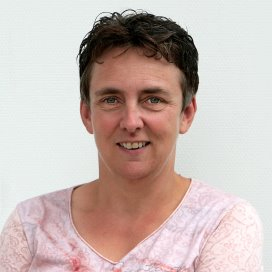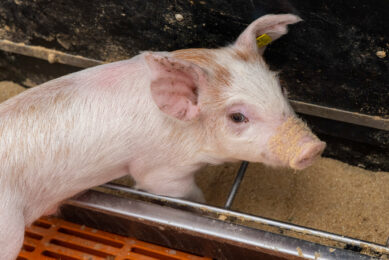Farrowing pen design helps against crushing
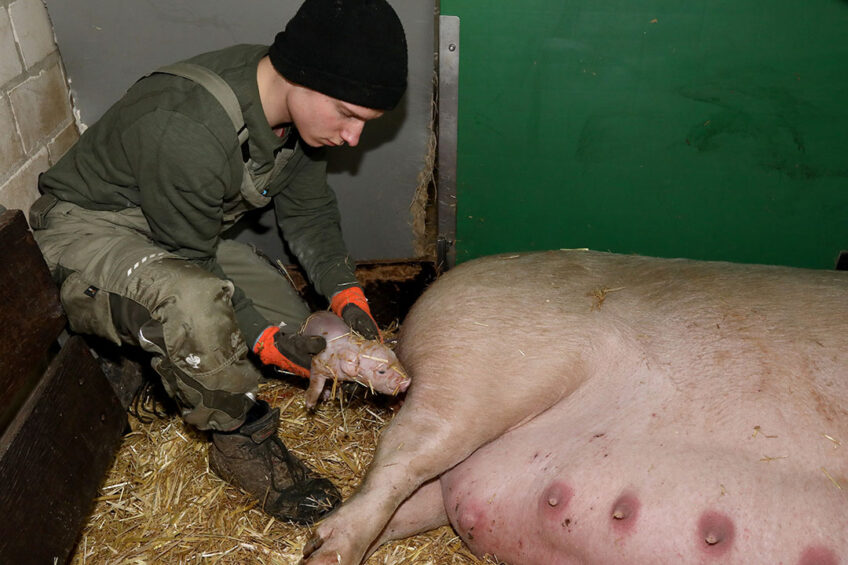
German pig producer Wilhelm Schulte-Remmert, based in Lippstadt, is working with free farrowing sows. In his view, the key terms in preventing crushing are peace and quiet, supervision and separate functional areas.
“It was me who paid for the pig house, but essentially it is the sow who is head of the farrowing pen,” says pig producer Wilhelm Schulte-Remmert. It neatly sums up his working method.
Nothing in the farrowing pens happens without the sows’ “permission”. For example, a farrowing pen is not entered without some form of announcement, followed by observation of the reaction and continuous communication between humans and animals. A sow that reacts irritably is left alone as much as possible, and the time in her pen is as short as possible.
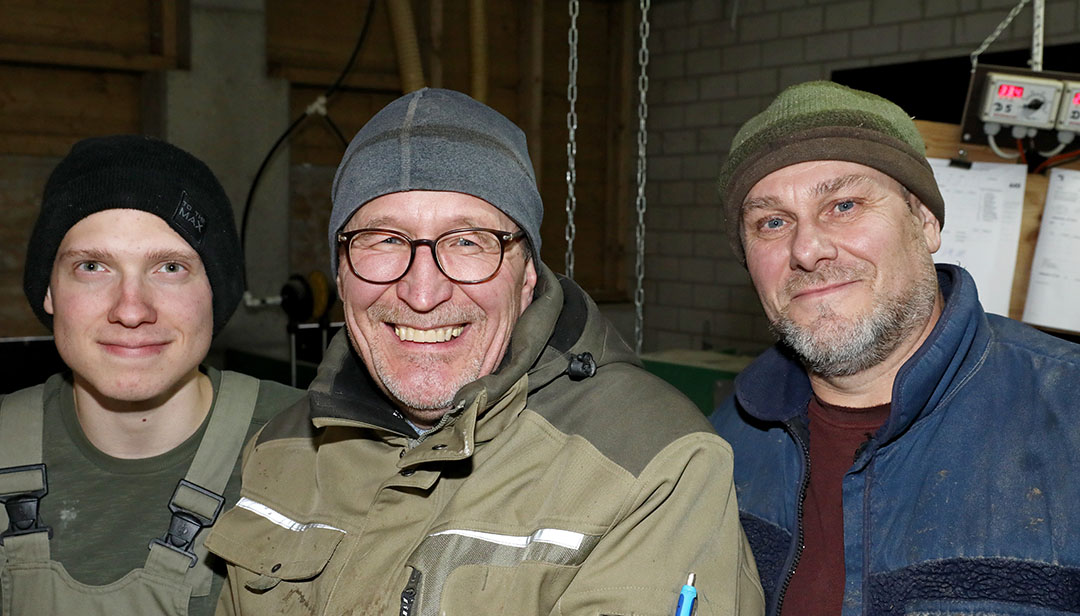
Overly protective behaviour is not a problem
Schulte-Remmert notes on each sow card how she behaves, both towards the producer as well as towards her piglets. Overly protective behaviour by the sows is not a problem, in his opinion. “There are always some sows that are very protective the first few days; they get a red card. After a few days you can just go into the pen. A few are downright aggressive; they leave after weaning. Our experience is that those sows do not recover, and we also need to be able to safely enter the pens.”
Character of the sows
The character of the sows is very important for the sow farmer because they farrow freely. The maternity sections have a remarkable set-up. The piglet nests are large green insulated boxes at the front of the farrowing pen, and each pen has 2 cover plates. Those covered areas can be closed separately from each other. During the switch from conventional to organic production, Schulte-Remmert visited several colleagues in Germany as well as abroad to find the most suitable farrowing pen.
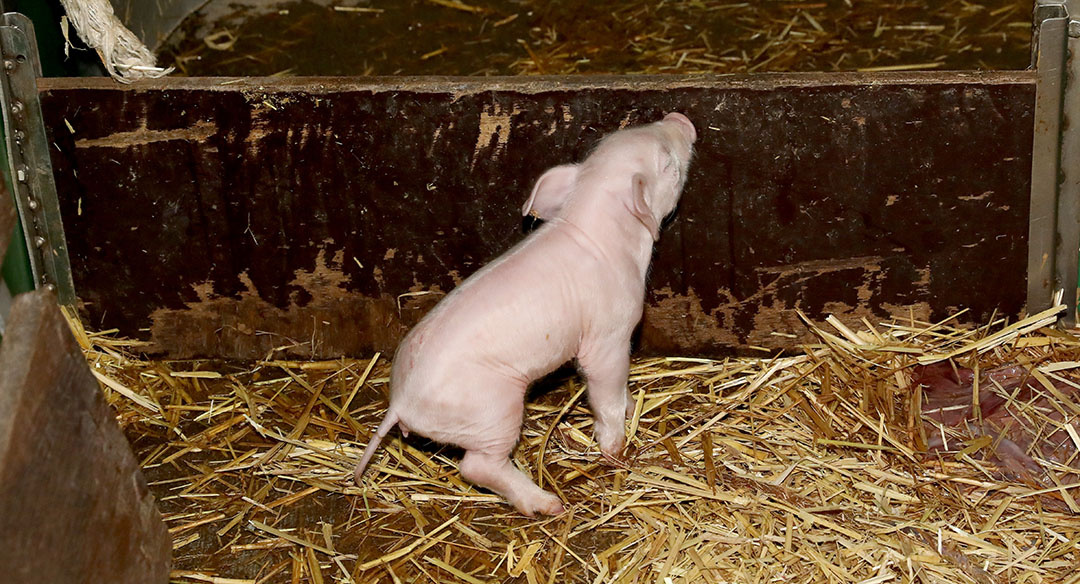
Eventually he came across the 3-climate zone loft of the Swiss company ATX Suisse. He says, “In Switzerland they have much longer experience with free-range farrowing pens and the practice of free farrowing. The farrowing pen is more expensive than traditional, but I can take more management measures.” The entire farrowing house cost € 10,000 per place 10 years ago, of which the farrowing pen cost € 6,000.
Function areas
The pens, made of green plastic, have clearly separated functional areas. A farrowing pen is 8.25 m2, of which the farrowing nest in the front covers 3.5 m2. The farrowing nest is closed from above. Despite the rough weather, only the flap at the level of the piglet nest is closed. The barn is not heated. The heat from the piglet nest, with the sow’s body heat, ensures a pleasant temperature in the lying area. During the day, the solar panels on the roof provide electricity to heat the piglet nests with infrared panels.
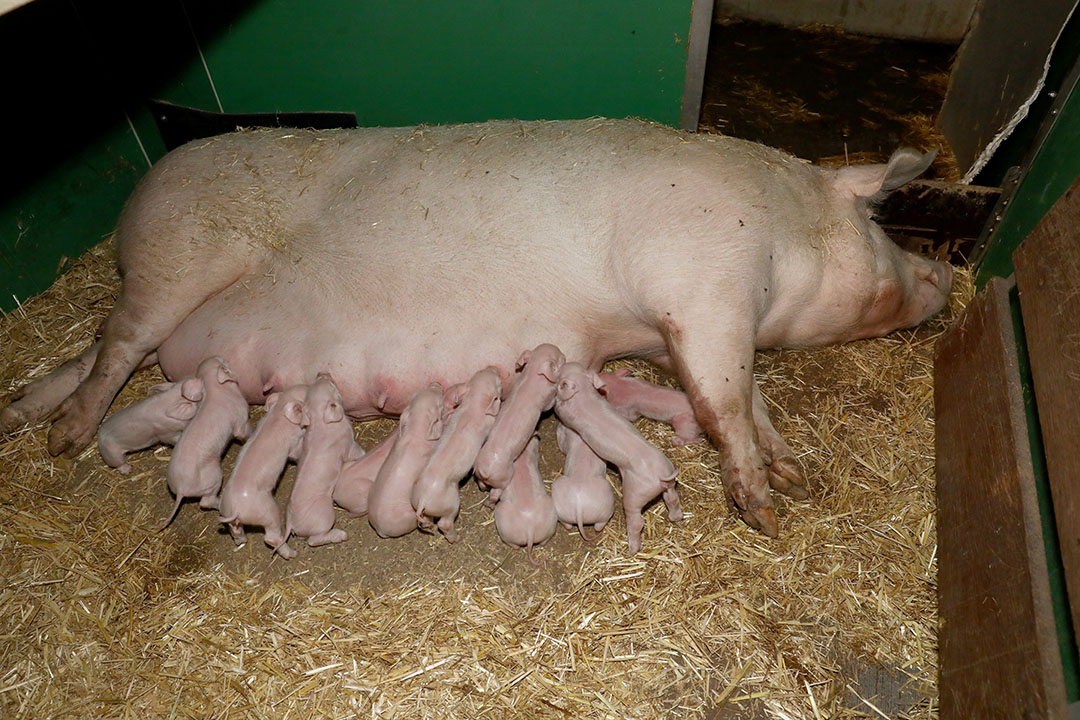
A plastic wall separates the sow’s resting area from the feeding zone and the outer zone. With a wooden partition in the passage, the producer ensures that the piglets cannot leave the farrowing nest during the first week. The piglet nest is long and narrow and positioned over almost the entire width of the farrowing pen.
An infrared panel is mounted in the lid of the nest. When birthing time arrives, the heating is set to 36 degrees. The temperature drops by half a degree Celsius every 24 hours during the lactation period. Infrared has the advantage of only heating the floor and the piglets below it, not the air.
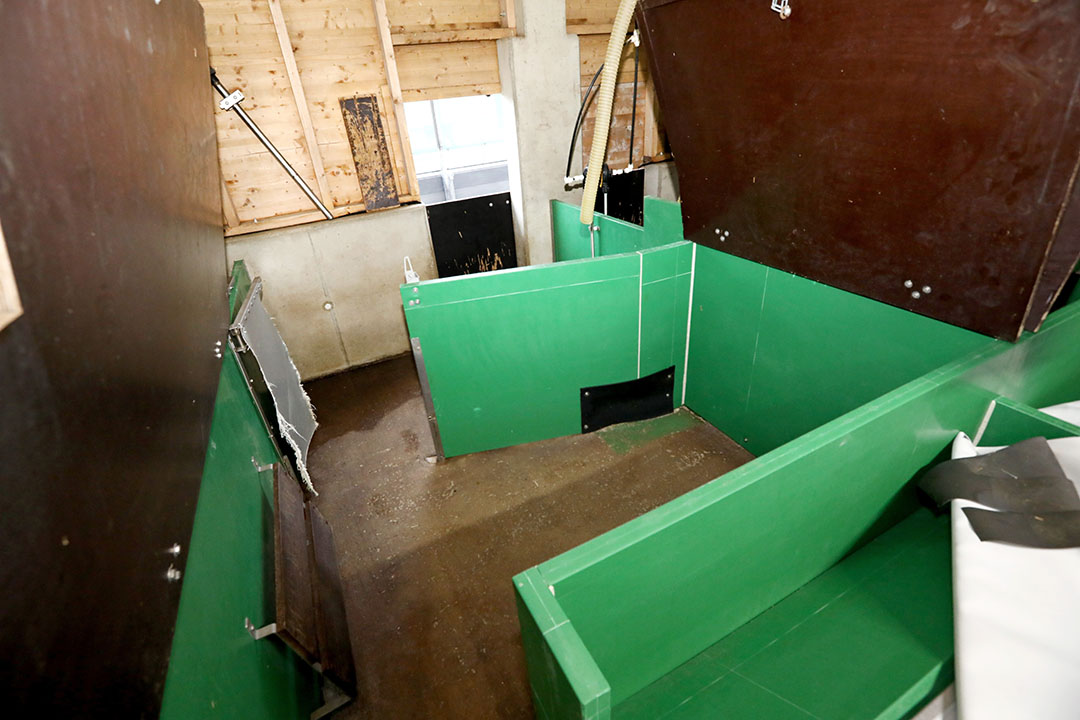
Birth control against crushing
During the first days the piglets are locked in the nest with a slide so they get to know their place. That is necessary because if they stay in the farrowing nest too much, the risk of crushing increases. After those 48 hours, hardly any piglets are crushed. To prevent crushing, there is always someone in the maternity pen until late at night on the farrowing days. That is not for quick interventions in the farrowing process, but to place piglets at the teats as soon as possible after birth to guarantee colostrum intake.
Schulte-Remmert allows the process to run as naturally as possible. He says: “That sow started yesterday at 6pm; at 10am she had 14 piglets, 15 when we arrived at the barn this morning and now 16 just after noon. You learn when you can let them do their thing or when intervention is needed.”
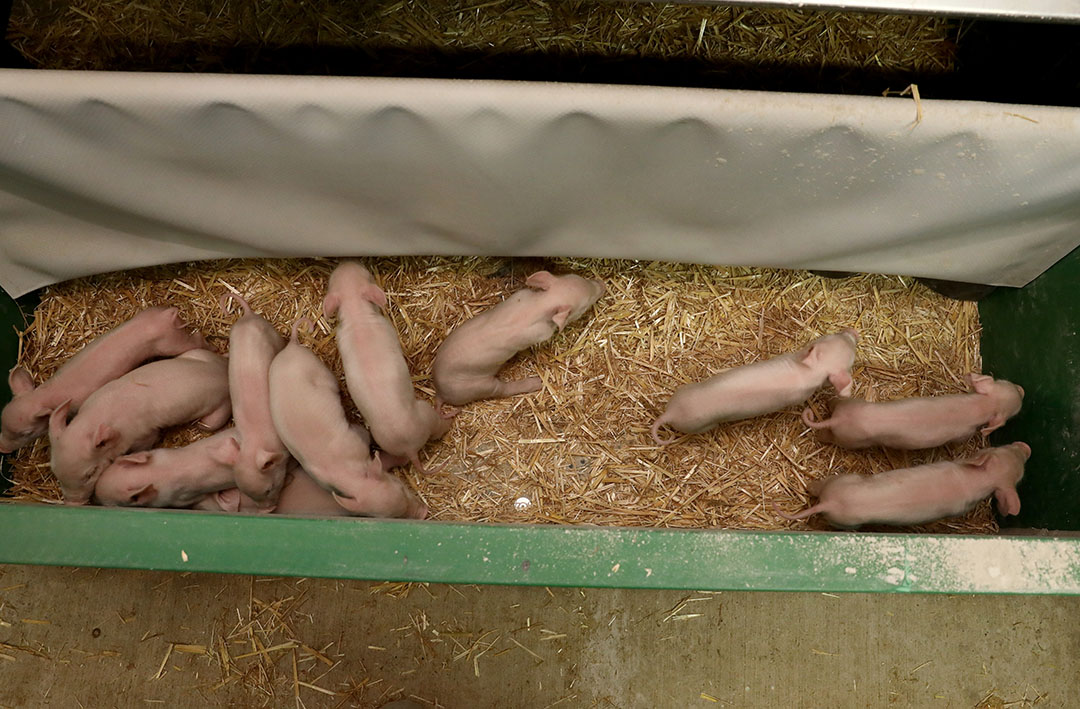
With their stomachs full, the piglets are placed in their nest. Trainee Fredrik has that task. As soon as a piglet screeches from one of the farrowing pens, both trainee and pig producer respond by removing the unfortunate animal from between the wall and the mother. “Crushing remains a difficult phenomenon. The mortality rate is 21%; that was 30% when we switched. With everything we try, it is 1 or 2 steps forward and 2 back again. The aim is to drop to 15% in 2024.”
Going outside
In the other 2 lactation areas, there are piglets aged from 2 to 4 weeks. They are allowed to run through the entire pen and can also go outside with the sow. In the rear of the farrowing pen there is a wide family trough on the floor. The piglets eat with the sow and learn to eat solid feed. The drinking bowl is also on the floor. Schulte-Remmert says, “Eating with the sow ensures that piglets all eat enough during weaning. An additional advantage is that almost no diarrhoea occurs after weaning. The sow’s saliva also ends up in in the feed, giving piglets a natural defence via enzymes.”
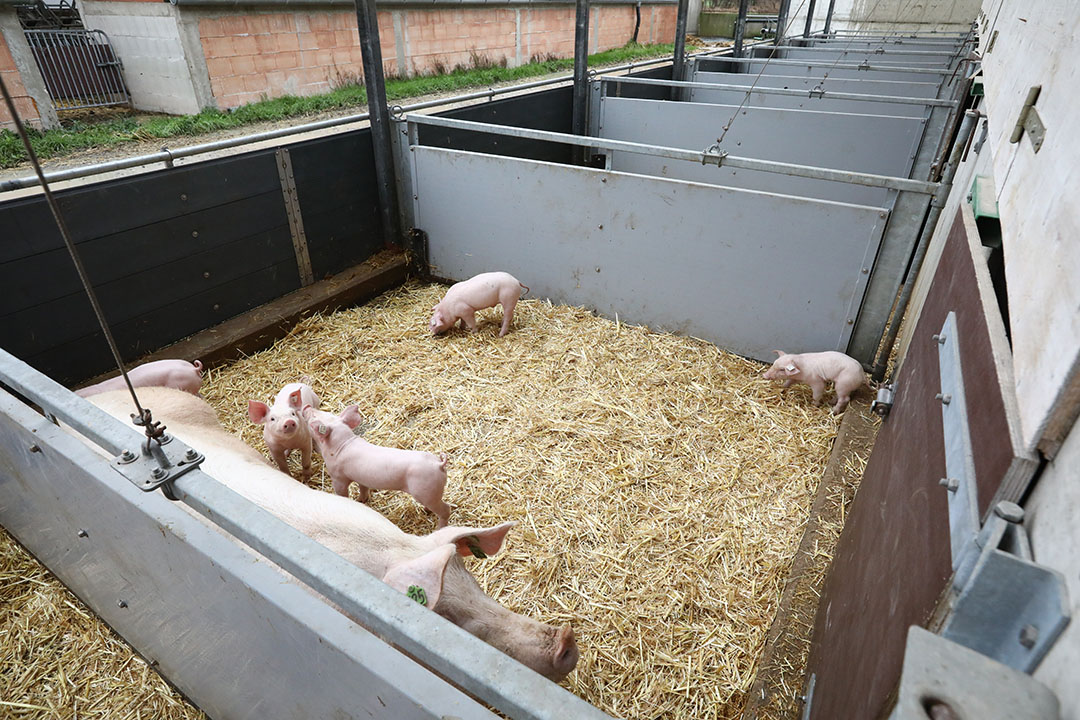
Indoor climate
Schulte-Remmert says that the indoor climate is even more important with free farrowing pens. The pig house is naturally ventilated with the air inlet on the west side and the air outlet on the east. In the initial phase, the sows were not lying properly in their farrowing pens and also dropped their manure too easily in the farrowing nest. There turned out to be too much draft on their resting area.
That was solved by installing windbreak gauze on the west side. The correct approach to the resting pens is also important for gestating sows, says Schulte-Remmert: “They often dropped manure in the resting areas during the winter. Now we close a few pens, so that there are more sows per pen. They like to lie together; it is warmer and then they do their business well outside.”


